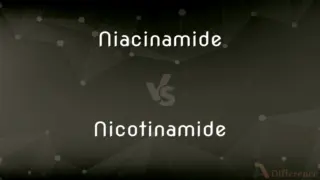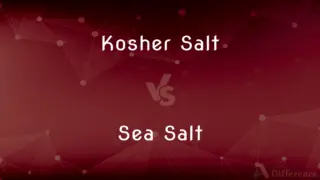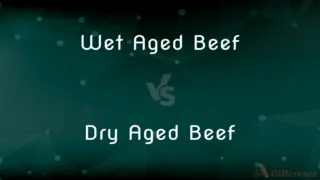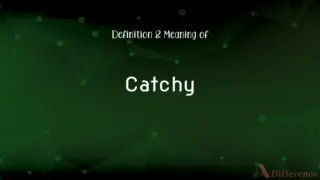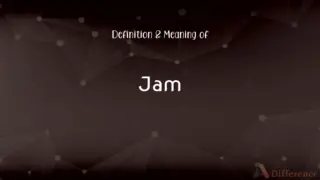Meat vs. Pith — What's the Difference?
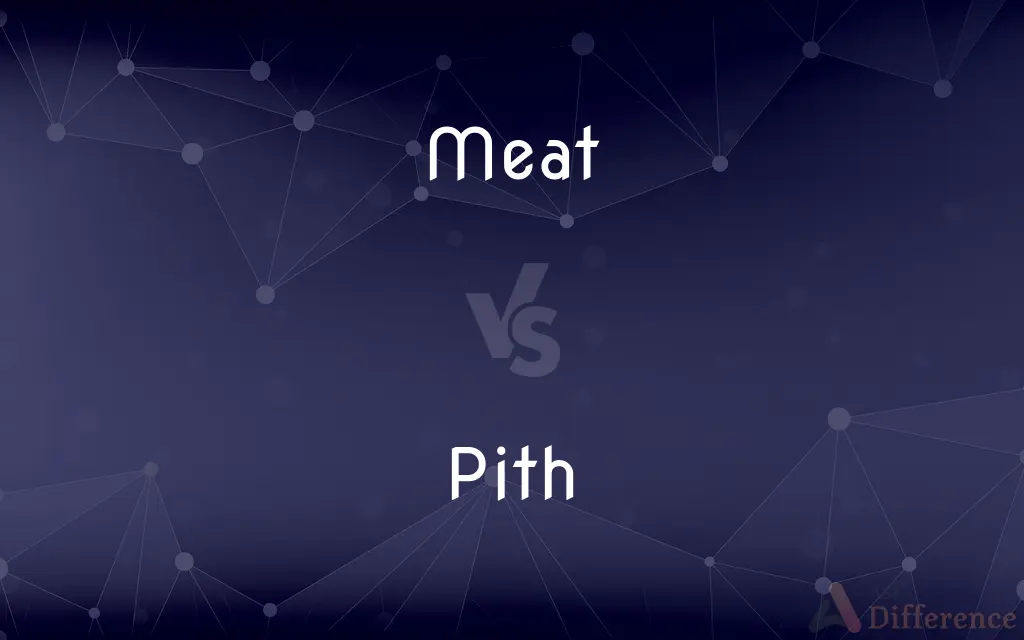
Difference Between Meat and Pith
ADVERTISEMENT
Compare with Definitions
Meat
Meat is animal flesh that is eaten as food. Humans have hunted and killed animals for meat since prehistoric times.
Pith
Pith, or medulla, is a tissue in the stems of vascular plants. Pith is composed of soft, spongy parenchyma cells, which in some cases can store starch.
Meat
The edible flesh of animals, especially that of mammals as opposed to that of fish or poultry.
Pith
The spongy white tissue lining the rind of oranges, lemons, and other citrus fruits.
Meat
The edible part, as of a piece of fruit or a nut.
ADVERTISEMENT
Pith
The essence of something
The pith and core of socialism
Meat
The essence, substance, or gist
The meat of the editorial.
Pith
Vigour and conciseness of expression
He writes with a combination of pith and exactitude
Meat
(Slang) Something that one enjoys or excels in; a forte
Tennis is his meat.
Pith
Remove the pith from
Peel and pith the oranges
Meat
Nourishment; food
"Love is not all.
Pith
Pierce or sever the spinal cord of (an animal) so as to kill or immobilize it.
Meat
The human body regarded as an object of sexual desire.
Pith
The soft, spongy tissue in the center of the stems of most vascular plants, consisting mainly of parenchyma.
Meat
The genitals.
Pith
The soft inner substance of a feather or hair.
Meat
(uncountable) The flesh (muscle tissue) of an animal used as food.
A large portion of domestic meat production comes from animals raised on factory farms.
The homesteading teenager shot a deer to supply his family with wild meat for the winter.
Pith
The spinal cord.
Meat
(countable) A type of meat, by anatomic position and provenance.
The butchery's profit rate on various meats varies greatly.
Pith
The essential or central part; the heart or essence
The pith of your argument is controversial.
Meat
Food, for animals or humans, especially solid food. See also meat and drink.
Pith
Strength; vigor; mettle.
Meat
A type of food, a dish.
Pith
Significance; importance
Matters of great pith.
Meat
(archaic) A meal.
Pith
To remove the pith from (a plant stem).
Meat
(obsolete) Meal; flour.
Pith
To sever or destroy the spinal cord of, usually by inserting a needle into the vertebral canal.
Meat
(uncountable) Any relatively thick, solid part of a fruit, nut etc.
The apple looked fine on the outside, but the meat was not very firm.
Pith
To kill (cattle) by cutting the spinal cord.
Meat
(slang) A penis.
Pith
(botany) The soft, spongy substance in the center of the stems of many plants and trees.
Meat
(colloquial) The best or most substantial part of something.
We recruited him right from the meat of our competitor.
Pith
The spongy interior substance of a feather or horn.
Meat
(sports) The sweet spot of a bat or club (in cricket, golf, baseball etc.).
He hit it right on the meat of the bat.
Pith
(anatomy) The spinal cord; the marrow.
Meat
(slang) A meathead.
Throw it in here, meat.
Pith
(botany) The albedo of a citrus fruit.
Meat
(Australian Aboriginal) A totem, or (by metonymy) a clan or clansman which uses it.
Pith
(figuratively) The essential or vital part; force; energy; importance.
The pith of my idea is that people should choose their own work hours.
Meat
Food, in general; anything eaten for nourishment, either by man or beast. Hence, the edible part of anything; as, the meat of a lobster, a nut, or an egg.
And God said, Behold, I have given you every herb bearing seed, . . . to you it shall be for meat.
Every moving thing that liveth shall be meat for you.
Pith
(figuratively) Power, strength, might.
Meat
The flesh of animals used as food; esp., animal muscle; as, a breakfast of bread and fruit without meat.
Pith
One divided by pi.
Meat
Dinner; the chief meal.
Pith
(transitive) To extract the pith from (a plant stem or tree).
Meat
To supply with food.
His shield well lined, his horses meated well.
Pith
(transitive) To kill (especially cattle or laboratory animals) by cutting or piercing the spinal cord.
Meat
The flesh of animals (including fishes and birds and snails) used as food
Pith
The ordinal form of the number pi.
The pith root of pi is approximately 1.439...
Meat
The inner and usually edible part of a seed or grain or nut or fruit stone;
Black walnut kernels are difficult to get out of the shell
Pith
The soft spongy substance in the center of the stems of many plants and trees, especially those of the dicotyledonous or exogenous classes. It consists of cellular tissue.
Meat
The choicest or most essential or most vital part of some idea or experience;
The gist of the prosecutor's argument
The heart and soul of the Republican Party
The nub of the story
Pith
The spongy interior substance of a feather.
Pith
Hence: The which contains the strength of life; the vital or essential part; concentrated force; vigor; strength; importance; as, the speech lacked pith.
Enterprises of great pith and moment.
Pith
To destroy the central nervous system of (an animal, as a frog), as by passing a stout wire or needle up and down the vertebral canal.
Pith
Soft spongelike central cylinder of the stems of most flowering plants
Pith
The choicest or most essential or most vital part of some idea or experience;
The gist of the prosecutor's argument
The heart and soul of the Republican Party
The nub of the story
Share Your Discovery

Previous Comparison
Cortex vs. Vortex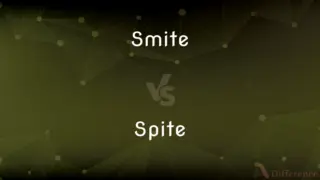
Next Comparison
Smite vs. Spite









